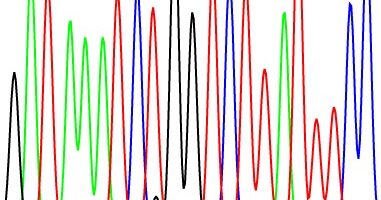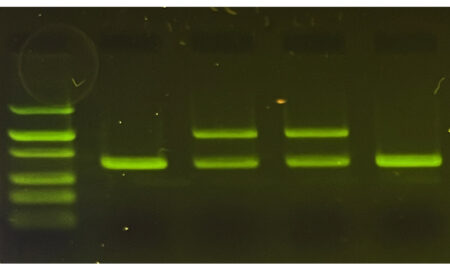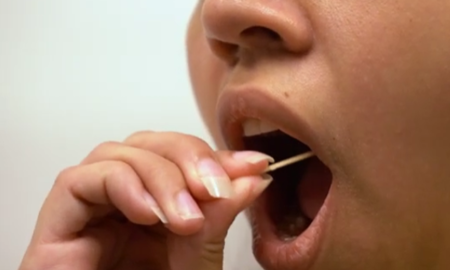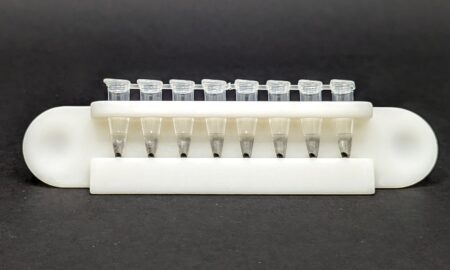Choosing the right voltage for your gel electrophoresis run
Some gel electrophoresis systems allow you to set the voltage for your gel run. Here, we will discuss how to select the voltage for your classroom gel electrophoresis experiment.
Selecting the gel electrophoresis voltage
- A general recommendation is to use 5-10 V for every centimeter of distance between the electrodes in your gel system:
Voltage = distance between the electrodes (cm) x 5-10 V/cm
- For example, if there are 10 cm between the electrodes, then run at 50-100 V
Why might you set a higher electrophoresis voltage?
- Using a higher voltage will make your samples migrate through the gel faster. This is especially useful in a classroom setting.
For most classroom applications, like miniPCR Learning Lab™ kits, you will likely get good results with a higher voltage run.
Why might you set a lower electrophoresis voltage?
- Lower voltage runs generate less heat. Setting the electrophoresis voltage too high can cause agarose gels to melt.
- If separating several large DNA fragments (>1.5 kb) better resolution can be achieved with a lower voltage run
Voltage settings on miniPCR gel electrophoresis systems
- blueGel™
- Runs at a safe low voltage for classroom use (fixed 48 volts).
- The innovative design of the blueGel system allows gels to run about twice as fast as traditional gel electrophoresis systems at this low voltage.
- GELATO™
- Four voltage settings: 50, 75, 100, and 135 V.
- Higher voltage settings (100-135 V) for fast separation of small DNA fragments (< 1.5 kb).
- Lower voltage settings (50-75 V) for clear separation of large DNA fragments (> 1.5 kb).










